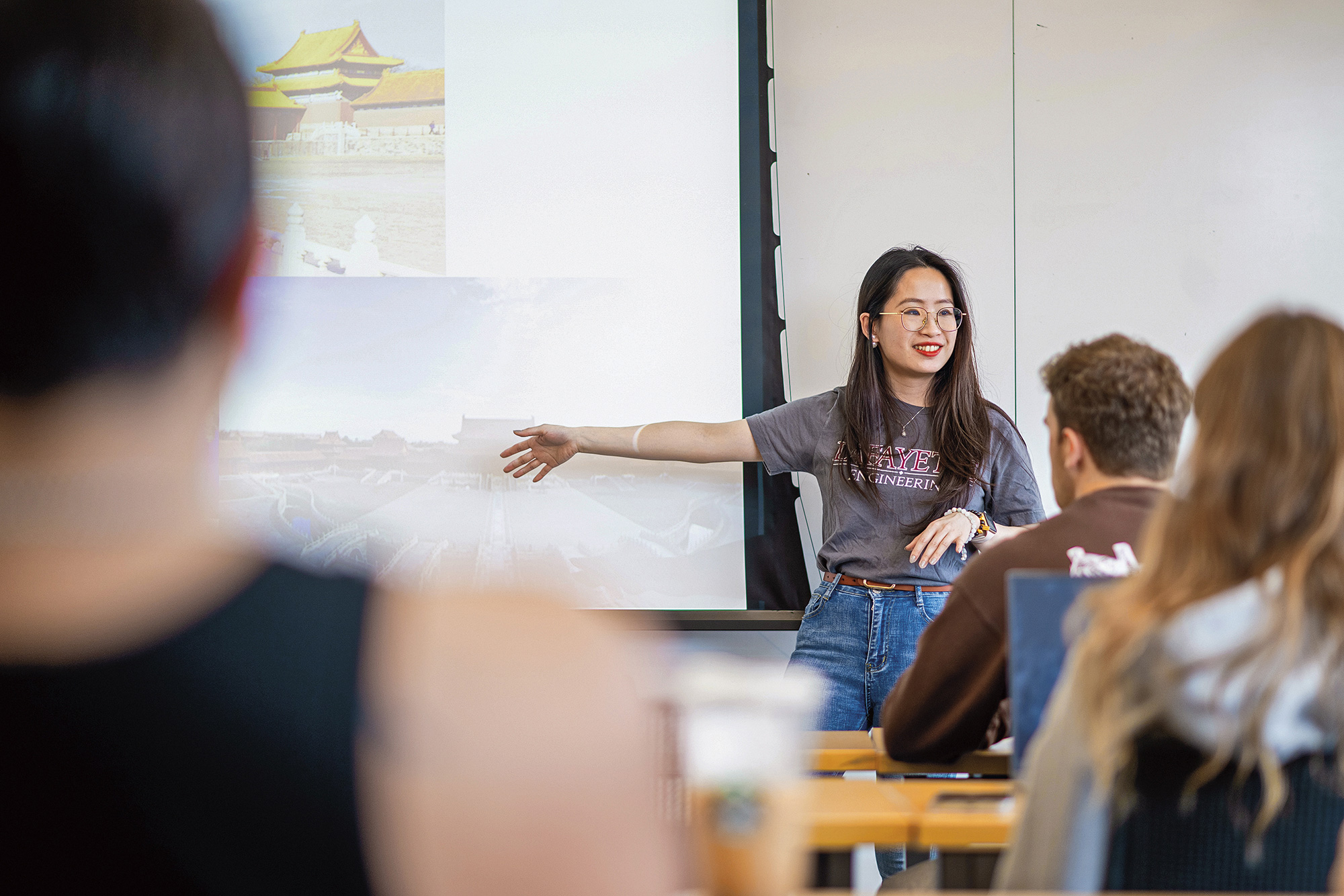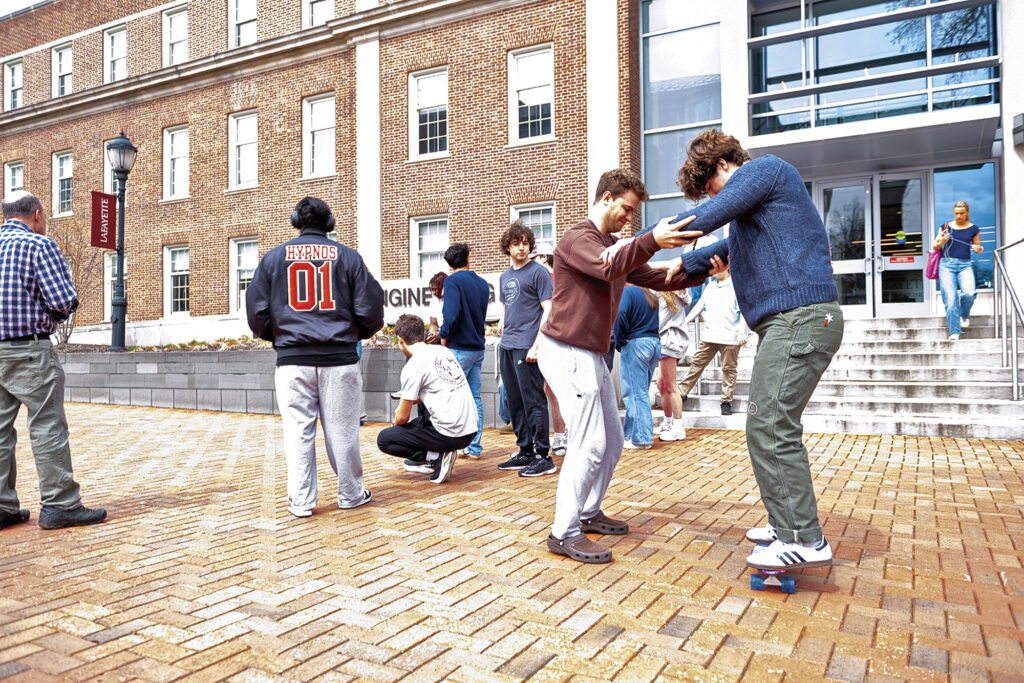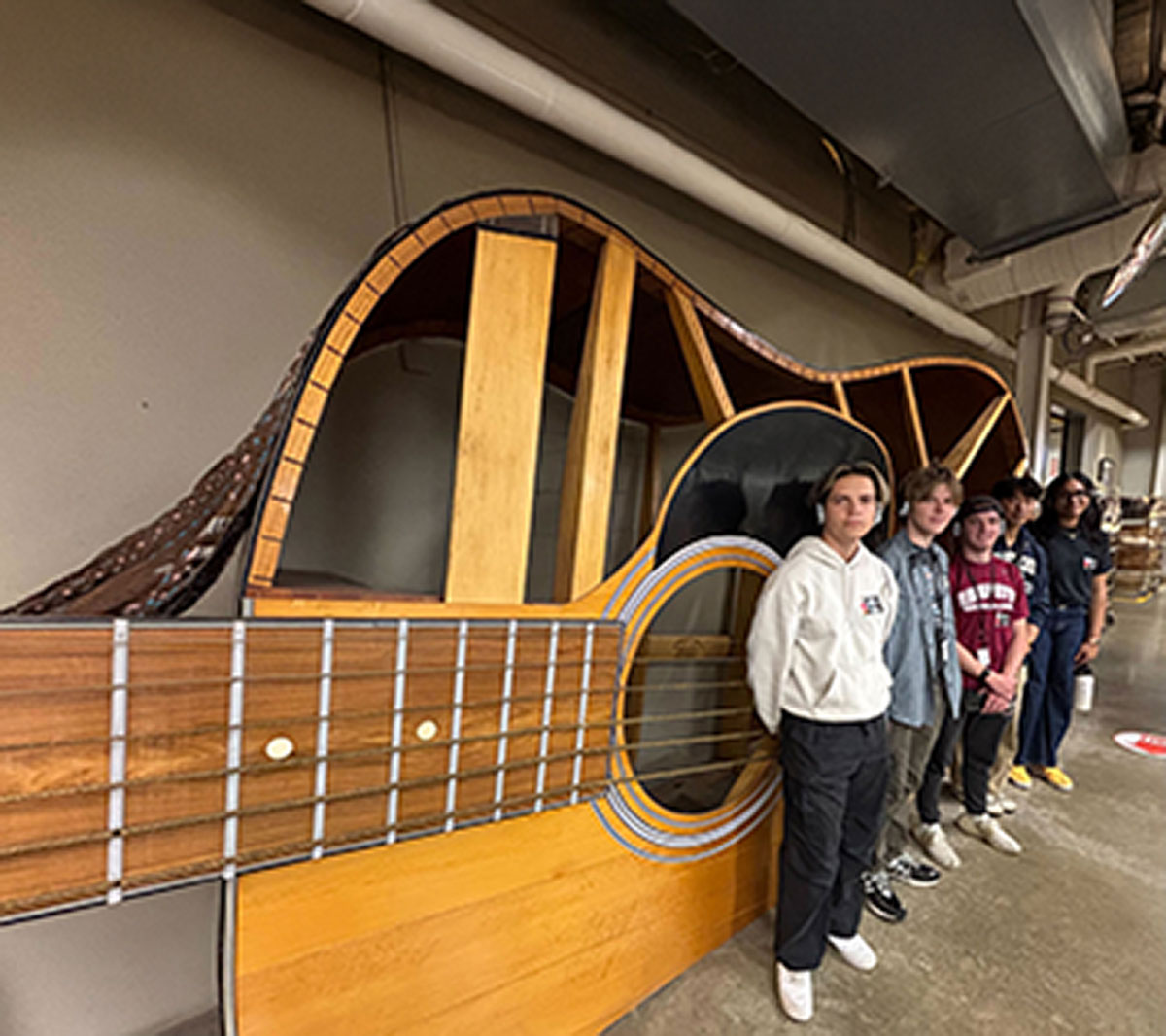Systems thinking
This required course for an integrative engineering degree is all about how things work together.

Photographs by Adam Atkinson, Illustration by Antonio Pinna
Diana Sun, assistant professor of mechanical engineering, helps students visualize the world. She opened a session of her spring semester Systems (ES 103) class by closely examining the Imperial Palace in Beijing’s Forbidden City, poring over design details with her students to uncover how its ingenious sloping drainage system has prevented flooding for more than 600 years.
“Look at the roof of the palace and take notice of how it is curved. How would you describe it?” she asks, pointing to how the roof was designed to channel rainwater away. “Take notice of the wide moat, which works as a barrier, and the underground surface drainage channels. It all works together as a system. We can use code to model it.”
As the classroom discussion moved away from the wonders of the Ming Dynasty, Sun (pictured) showed a video of skateboarders in action, exploring how friction and momentum come together to keep the skateboard seemingly attached to the feet during stunts.
Later, her students decamped to Anderson Courtyard where they hopped on a skateboard to further demonstrate how this recreational activity itself is a system because it combines gravity, balance, and biomechanics to achieve specific goals. A game of tug-of-war also ensued, showing that it, too, was a system—one that is thousands of years old—through the use of resilient and consistent force.
Indeed, systems have been part of the human experience since the dawn of civilization, and Sun loves teaching Lafayette students about it, which leads to solutions to address complex challenges.
“We try to help our students learn how to analyze, model, and predict systems that involve mechanics, fluids, and electric phenomena,” Sun describes. “It helps them understand and define what they’re looking at and decide whether something can be ignored, modified, and simplified by making a model.”
The Systems class is discussion oriented as they ponder questions like: What do you think about your model? Is this a good model? What do you think about your results? Can you believe your results?
“As engineers, they have to be able to self-critique and validate how much they can trust their results,” Sun says. “Here they have a support network to put everything together.”
Her students are more accustomed to solving math problems, such as finding X plus Y. “But in this class,” Sun notes, “we’re asking them to dig in more deeply to uncover what is X and explore Y, and what will happen when you bring X and Y together.”
Sun also brings out one of her research interests, blood clotting, as an example of a system. Started during her Ph.D. work at Georgia Institute of Technology, the research focuses on the mechanics of blood clotting, specifically using computational modeling to understand how platelets and fibrin interact to contract blood clots.

Learning how to control this contraction could lead to new ways to both treat bleeding and clotting problems, and help patients facing certain medical emergencies such as trauma and cardiac arrest. “Our circulatory system is a complex system that involves different scales, like platelets and red blood cells,” Sun says. “It’s a good fit for this course.” Although it’s popular among mechanical engineering students, Systems is a required course for students pursuing a degree in integrative engineering, providing a basic foundation to understand how to make models. Juniors and seniors from other nonengineering disciplines also take the course.
Students learn about Newton’s laws and Kirchhoff’s laws, and how to build a complex math model that involves differential equations. For many of the students in the course, this is their first exposure with modeling, and Sun says they recognize the challenges they face.
But she makes the material accessible and enjoyable. “It’s hard work, but students enjoy this course a lot, in large part because systems are omnipresent in our lives,” she says.
“I usually start with describing a system as anything that has many things and works together,” she says, citing a pipeline that brings water into a large public swimming pool, for example. “A system can be very broad, as long as there are things with interconnections affecting another part, and this other part will affect another part. As long as you can find these connections, this is a system. And then when you model these systems, students have the freedom to make decisions and define how their systems will function.”
Out on the courtyard, Alie Kamara ’27, a bioengineering major and defensive lineman on the football team, says the course has led to an appreciation of how systems help people live better lives.
“Prof. Sun delivers the material with a smile,” he says. “The course is challenging and complex, but she knows how to teach it and make it all relevant. The hands-on demonstrations help us visualize the concepts.”
“It helps us better observe the world around us,” adds Carson Belaire ’27, who’s majoring in engineering studies and economics and minoring in Spanish. “And Prof. Sun brings such joy in her teaching. She makes it exciting as we gain an appreciation of seeing the world through systems.”




